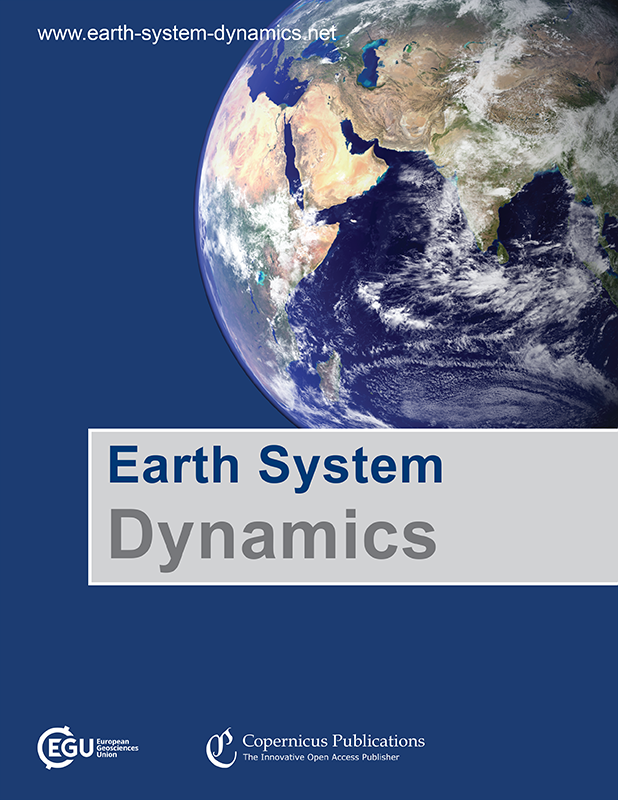Possible role of anthropogenic climate change in the record-breaking 2020 Lake Victoria levels and floods
IF 7.9
2区 地球科学
Q1 GEOSCIENCES, MULTIDISCIPLINARY
引用次数: 0
Abstract
Abstract. Heavy rainfall in eastern Africa between late 2019 and mid 2020 caused devastating floods and landslides throughout the region. These rains drove the levels of Lake Victoria to a record-breaking maximum in the second half of May 2020. The combination of high lake levels, consequent shoreline flooding, and flooding of tributary rivers caused hundreds of casualties and damage to housing, agriculture, and infrastructure in the riparian countries of Uganda, Kenya, and Tanzania. Media and government reports linked the heavy precipitation and floods to anthropogenic climate change, but a formal scientific attribution study has not been carried out so far. In this study, we characterize the spatial extent and impacts of the floods in the Lake Victoria basin and then investigate to what extent human-induced climate change influenced the probability and magnitude of the record-breaking lake levels and associated flooding by applying a multi-model extreme event attribution methodology. Using remote-sensing-based flood mapping tools, we find that more than 29 000 people living within a 50 km radius of the lake shorelines were affected by floods between April and July 2020. Precipitation in the basin was the highest recorded in at least 3 decades, causing lake levels to rise by 1.21 m between late 2019 and mid 2020. The flood, defined as a 6-month rise in lake levels as extreme as that observed in the lead-up to May 2020, is estimated to be a 63-year event in the current climate. Based on observations and climate model simulations, the best estimate is that the event has become more likely by a factor of 1.8 in the current climate compared to a pre-industrial climate and that in the absence of anthropogenic climate change an event with the same return period would have led lake levels to rise by 7 cm less than observed. Nonetheless, uncertainties in the attribution statement are relatively large due to large natural variability and include the possibility of no observed attributable change in the probability of the event (probability ratio, 95 % confidence interval 0.8–15.8) or in the magnitude of lake level rise during an event with the same return period (magnitude change, 95 % confidence interval 0–14 cm). In addition to anthropogenic climate change, other possible drivers of the floods and their impacts include human land and water management, the exposure and vulnerability of settlements and economic activities located in flood-prone areas, and modes of climate variability that modulate seasonal precipitation. The attribution statement could be strengthened by using a larger number of climate model simulations, as well as by quantitatively accounting for non-meteorological drivers of the flood and potential unforced modes of climate variability. By disentangling the role of anthropogenic climate change and natural variability in the high-impact 2020 floods in the Lake Victoria basin, this paper contributes to a better understanding of changing hydrometeorological extremes in eastern Africa and the African Great Lakes region.人为气候变化在 2020 年维多利亚湖水位破纪录和洪水中可能扮演的角色
摘要2019 年末至 2020 年中,非洲东部的强降雨在整个地区造成了毁灭性的洪水和山体滑坡。这些降雨使维多利亚湖的水位在 2020 年 5 月下半月达到破纪录的最高值。高湖水位、随之而来的海岸线洪水以及支流河流洪水,在乌干达、肯尼亚和坦桑尼亚等沿岸国家造成了数百人伤亡,并对住房、农业和基础设施造成了破坏。媒体和政府报道将强降水和洪水与人为气候变化联系在一起,但迄今为止尚未开展正式的科学归因研究。在本研究中,我们描述了维多利亚湖流域洪水的空间范围和影响,然后通过应用多模型极端事件归因方法,研究人为气候变化在多大程度上影响了破纪录的湖泊水位和相关洪水的概率和规模。利用基于遥感的洪水绘图工具,我们发现在 2020 年 4 月至 7 月期间,居住在湖岸半径 50 公里范围内的 29000 多人受到了洪水的影响。该流域的降水量创下了至少 30 年来的最高记录,导致湖泊水位在 2019 年末至 2020 年中上升了 1.21 米。洪水的定义是 6 个月内湖泊水位上升到 2020 年 5 月之前所观测到的极端水平,据估计,在目前的气候条件下,这是 63 年一遇的洪水。根据观测结果和气候模型模拟,最佳估计是,与工业化前的气候相比,在当前气候下发生该事件的可能性增加了 1.8 倍,如果没有人为气候变化,相同重现期的事件会导致湖泊水位比观测到的上升少 7 厘米。然而,由于自然变异性较大,归因声明中的不确定性也相对较大,包括在事件发生概率(概率比,95% 置信区间为 0.8-15.8)或相同重现期事件中湖泊水位上升幅度(幅度变化,95% 置信区间为 0-14 厘米)没有观测到可归因变化的可能性。除人为气候变化外,洪水及其影响的其他可能驱动因素还包括人类的土地和水资源管理、位于洪水易发地区的居民点和经济活动的暴露程度和脆弱性,以及调节季节性降水的气候变异模式。通过使用更多的气候模型模拟,以及定量考虑洪水的非气象驱动因素和潜在的非强制气候变异模式,可以加强归因说明。通过厘清人为气候变化和自然变异在维多利亚湖流域 2020 年高影响洪水中的作用,本文有助于更好地理解非洲东部和非洲大湖区不断变化的极端水文气象。
本文章由计算机程序翻译,如有差异,请以英文原文为准。
求助全文
约1分钟内获得全文
求助全文
来源期刊

Earth System Dynamics
GEOSCIENCES, MULTIDISCIPLINARY-
CiteScore
13.20
自引率
5.50%
发文量
61
审稿时长
36 weeks
期刊介绍:
Earth System Dynamics (ESD) is a not-for-profit international scientific journal committed to publishing and facilitating public discussion on interdisciplinary studies focusing on the Earth system and global change. The journal explores the intricate interactions among Earth's component systems, including the atmosphere, cryosphere, hydrosphere, oceans, pedosphere, lithosphere, and the influence of life and human activity. ESD welcomes contributions that delve into these interactions, their conceptualization, modeling, quantification, predictions of global change impacts, and their implications for Earth's habitability, humanity, and the future dynamics in the Anthropocene.
 求助内容:
求助内容: 应助结果提醒方式:
应助结果提醒方式:


